Just over 20 years ago, me and the missus started a family, which was something of a shock to the system for a number of different reasons. One of which was that I, a motoring journalist, would have to spend my own money on a car. Oh, the horror of it. By then, I’d already spent 10 years in this business doling out advice to others concerning what they should buy, without once ever practising what I preached. Like the rest of my colleagues, I just drove test cars.
But that wouldn’t work any longer, because even if I could keep up the supply of cars, I could hardly guarantee they’d all be big enough to carry what would soon turn out to be both of my children and all the clobber associated with having young people around, yet still be compact enough to park in a crowded London terrace street. In fact, being honest, none of them would. Except one.
The decision to buy an Mercedes-Benz A-Class wasn’t really a decision at all. When I inputted all the data about what we needed into what passes for the computer between my ears, the choice was (a) buy an A-Class or (b) sell your children.
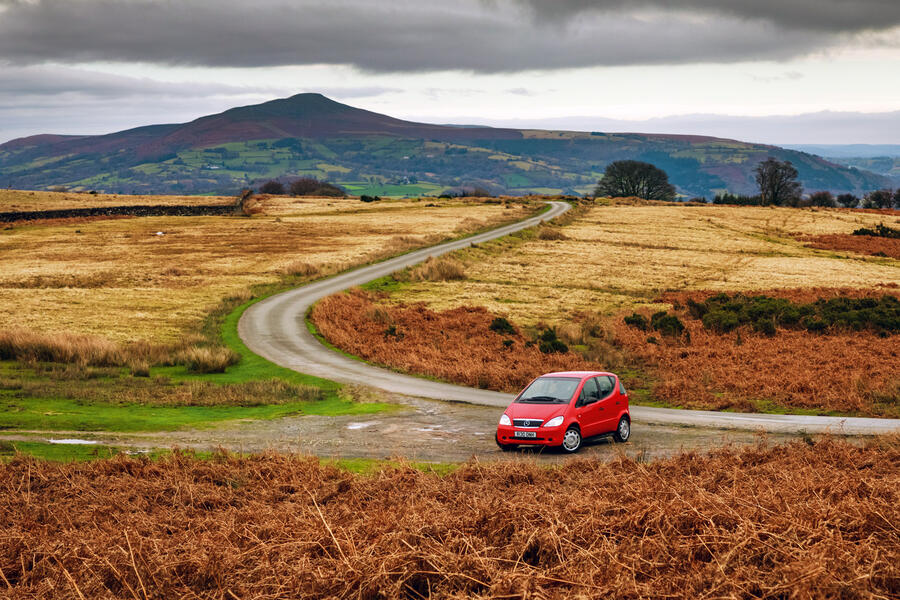
It was so easy. The A-Class was short yet spacious, small yet strong. And if I bought a poverty-spec model that had just come off the Mercedes-Benz press fleet, having spent the first 10,000 miles of its life being thrashed to death by, well, people like me, I could just about afford one, too.
Which is how R130 ONH came into our lives. To be honest, I wasn’t very excited about its arrival. I wasn’t as down on the ride and handling as some of my colleagues, but it looked a long way from cool, was pretty slow, and although I’ll fly in the face of popular opinion and say it was quite well put together by class standards, some of the materials chosen weren’t very Benz. At all.
But by then, I’d not realised what miracles these cars are. Okay, I’d been told that in packaging terms, they were the cleverest things to come to market since the original Mini; and I’d learned about the sandwich construction and the way the engine is slung almost under the car and how it absorbs almost all the force in a frontal impact by sliding backwards beneath you; but I’d not really studied the benefits because, until I bought one, I’d not really needed to.
It didn’t take long. At the time, I had a Jaguar XJR saloon long-term test car, which was full to the gunwales with everything we needed for a weekend away in Wales until, at the very last moment and for reasons I can no longer recall, we had to take the A-Class. I can remember thinking that if we could fit half an XJ’s worth of kit on board, I’d be pleased. In fact, it swallowed the lot with space to spare. And provided more rear leg room. The A140 is a little over 3.5 metres long. The Jaguar XJ? A nice, round five metres.
![]()
But there’s more. The A140’s rear seats not only folded as you’d expect, but they could also be individually slid fore and aft, reclined or removed. As could the front passenger seat, which would therefore turn the A-Class into a single-seater. This car, which is less than the length of your thumb longer than a Volkswagen Up could, if you so chose, do a perfectly passable impression of a small van.
This is what you think about when you drive it. It doesn’t have to have the dynamic prowess of a Caterham Seven or even a Volkswagen Golf GTI for it to be a great car. When lists of the world’s greatest cars are drawn up, the Citroën DS always pops up somewhere but not, believe me, because of the way it drove: it was slow, cumbersome and dull. But it was innovative and beautiful and that was enough. Now, I concede the A-Class can’t even play the prettiness card, but as an innovation, no mass-produced car launched in the past 20 years can get near it. Indeed, extend the trawl to the past 60 years and I would indeed put it up there with the original Mini.
But unlike the Mini, the A-Class didn’t stay in production for over 40 years. It managed 15 in two very distinct series (W168 and W169, as Benz geeks will tell you) but the second series, while better built than the first, was nothing like as clever. Whereas the W168 had been available with two wheelbases (the longer providing more rear leg room than a Bentley Arnage in a car still shorter than a Ford Fiesta), the W169 had just one that split the difference. And its rear seats just folded like those of any other hatchback. Cheaper to produce, no doubt, but in all other regards, a serious backward step.
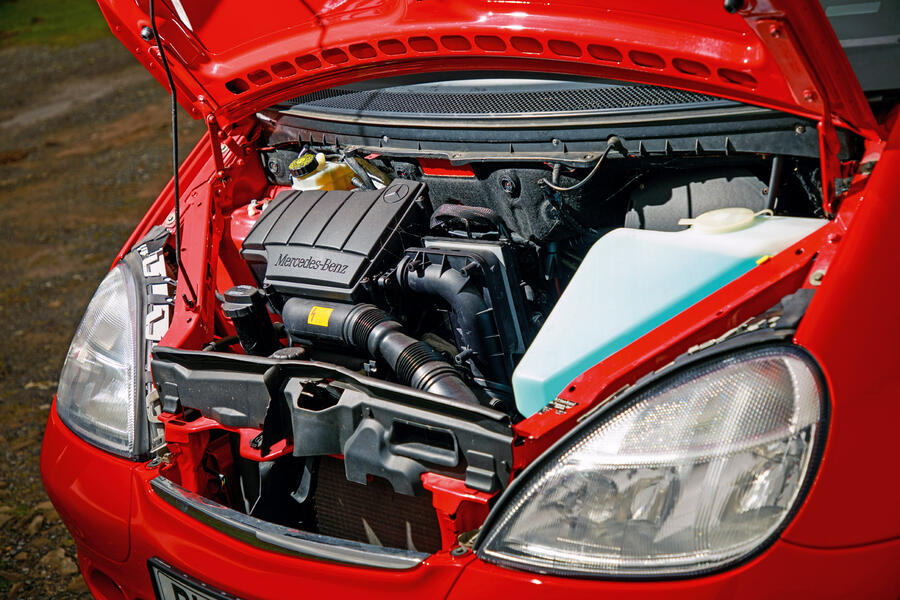
And I think there is now some sense that the original A-Class was a failure, although it was nothing of the sort. It got off to a difficult start after a Swedish magazine inverted one avoiding an imaginary elk, but with different suspension settings and standard-fit stability control, it conquered that. The build quality was more of an issue, not because it was especially terrible for its class or price point, but because it was not what people expected of a Mercedes-Benz. Even so, for a hatchback from a brand with no track record in the class, it actually sold well: over a million W168s in the seven years it was on sale.
So why discontinue it? Why was the third generation A-Class as conventional as the original was revolutionary? The answer is all in that word ‘hatchback’. The way it was designed, a hatchback was all it could ever be, and that’s just not how the world works these days. It meant, for instance, the car would never be sold in North America.
Today, the A-Class is built on Mercedes’ modular MFA2 front-wheel-drive platform. It is built as both a five-door hatchback and a four-door saloon and also as an MPV, although that’s called a Mercedes-Benz B-Class. Change the outfit once more into that of a four-door coupé and you have a Mercedes-Benz CLA or, with five doors, a CLA Shooting Brake. Hop into another costume and it’ll give you a Mercedes-Benz GLA crossover or a GLB compact SUV. Really stretch the point and you’ll find A-Class underpinnings beneath the Infiniti Q30 and QX30, too. Against such possibilities, a humble hatchback has no chance, however ground-breaking is its design. The irony that one of the most versatile cars of its era was killed by its platform’s lack of versatility has not been lost on me.
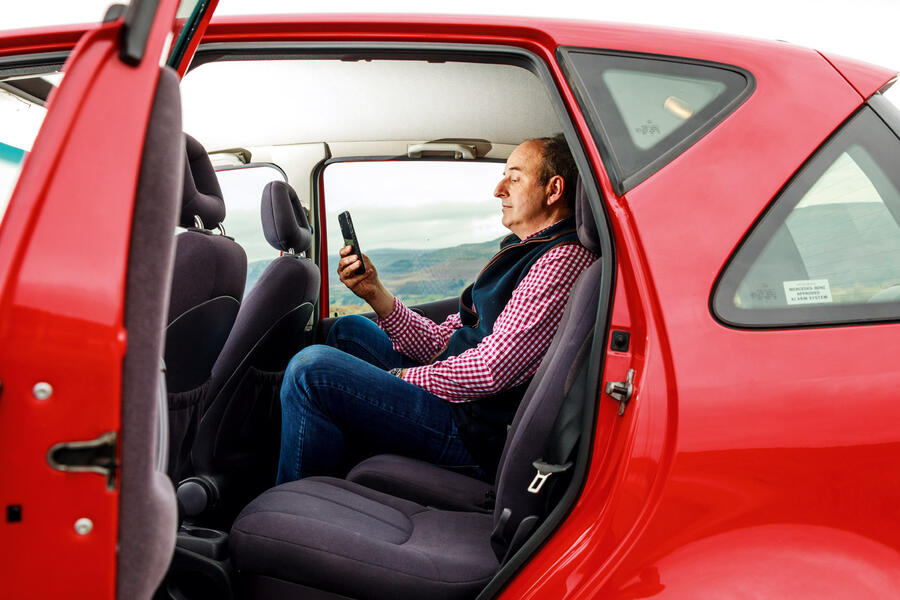
But for us, R130 ONH was perfect and remained that way (figuratively if not literally) for another 10 years. My children grew up in it. It took the dogs to the beach, the rubbish to the tip. But even we managed eventually to outgrow it, so about 10 years ago, we sold it back to Mercedes. At the time, Mercedes was building a small fleet of historic models and wanted the A140 because, so far as anyone could work out, it was the oldest A-Class in the country.
And over the years, Mercedes restored it to original condition. Apparently, the greatest challenge was getting rid of the all-pervading odour of damp Labrador. The car was exhibited whenever a new A-Class model was launched, and every so often, a journalist would borrow it for a job. But last year, Mercedes decided it had done all it could do and felt it was time to move it on. Did I want it back?
The answer was clearly not. We have a family runabout, and although the A-Class might have had a role as a car for my now grown-up children to drive, the reality was that the moment I pointed out it had neither air conditioning nor any way of connecting to a smartphone, their noses turned north. I was about to tell them it was the A-Class or a bus pass, but then I looked at the cost of insuring it for them and realised it would cost far more than the car was worth to cover them for just one year.
So, no, there were no grounds to buy it back. So, of course, I did. For all 22 years of its life, it has only ever been owned by Mercedes-Benz and me, and I just didn’t like the idea of losing touch with a car that had played such a central role in my family’s most formative years. So it has joined the 1950s 2CV, 1960s Fiat 500 and 1970s Land Rover in my small accumulation of silly old cars, where I expect it to stay for another 10 years. After that, Mercedes can have it back again.
What to pay for a used Mk1 (W168) A-Class
£2000: This is absolutely top end. Expect full history, low miles and pristine condition. Long-wheelbase versions are well worth a look, too, because they’re still shorter than a Ford Fiesta.

£1000: Plenty of low-mileage cars are available for a grand. But watch out for signs of rust. W168 A-Classes are not as good as later Benzes at resisting tin worm. Ensure recall work has been done and there aren’t too many broken bits inside.
£500: Even 500 notes can buy you a perfectly usable A-Class, and quite a late one, too. It will probably have done a few miles and look quite shabby, particularly inside, but if it has been well maintained, it could still be a bargain.
Small wonders
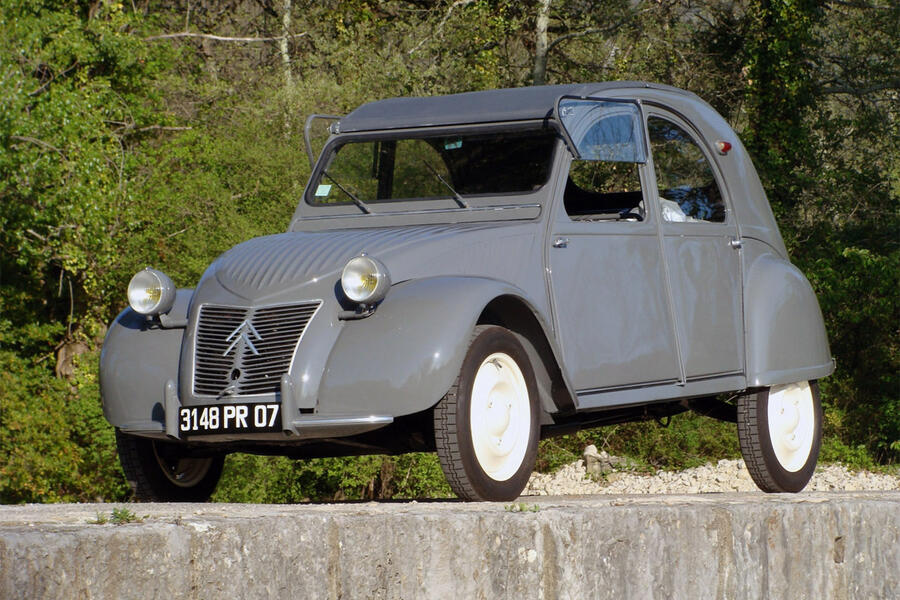
1949 Citroen 2CV: More than 70 years ago, a car with a ground-hugging flat-formation engine, McLaren-style interconnected springing and an interior whose seats could be removed in seconds. So much more clever than it looked.
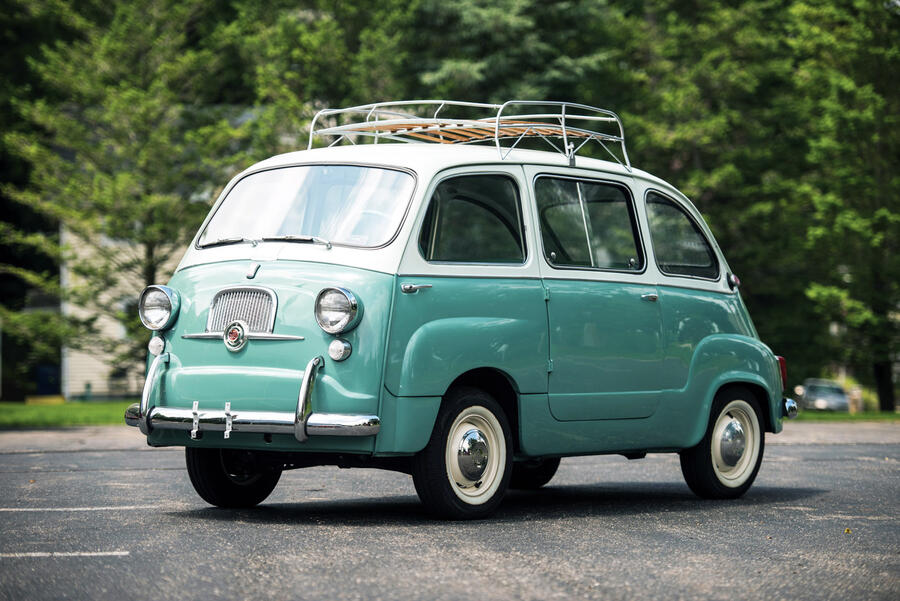
1956 Fiat 600 Multipla: Think an A-Class is space-efficient? The original Multipla was shorter still yet provided seating for up to six people – albeit at the expense of luggage space. And probably not great in a crash, either…
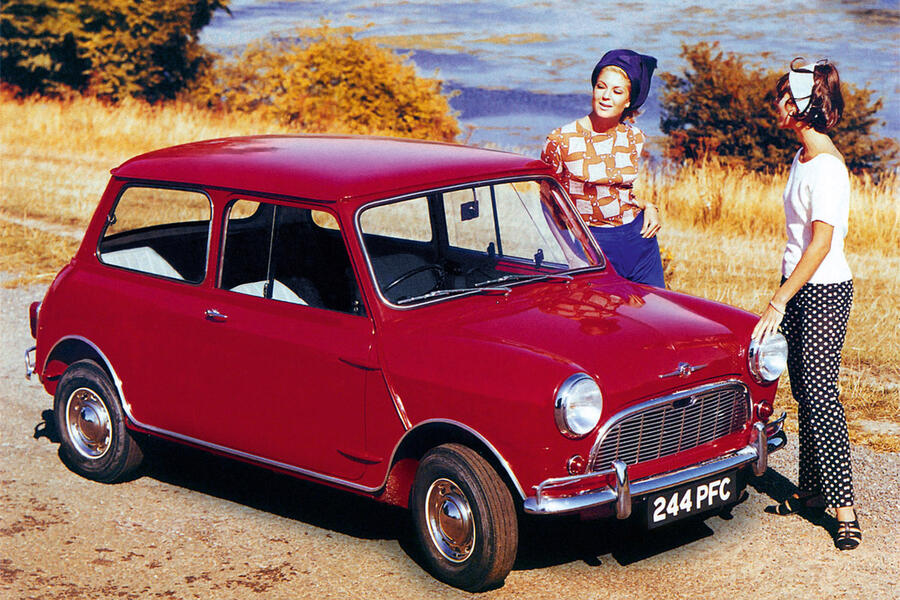
1959 BMC Mini: A transverse engine, rubber springs, single-skin doors, external hinges and even everted body seams all contributed to making the Mini a packaging miracle. A masterpiece of smart thinking.
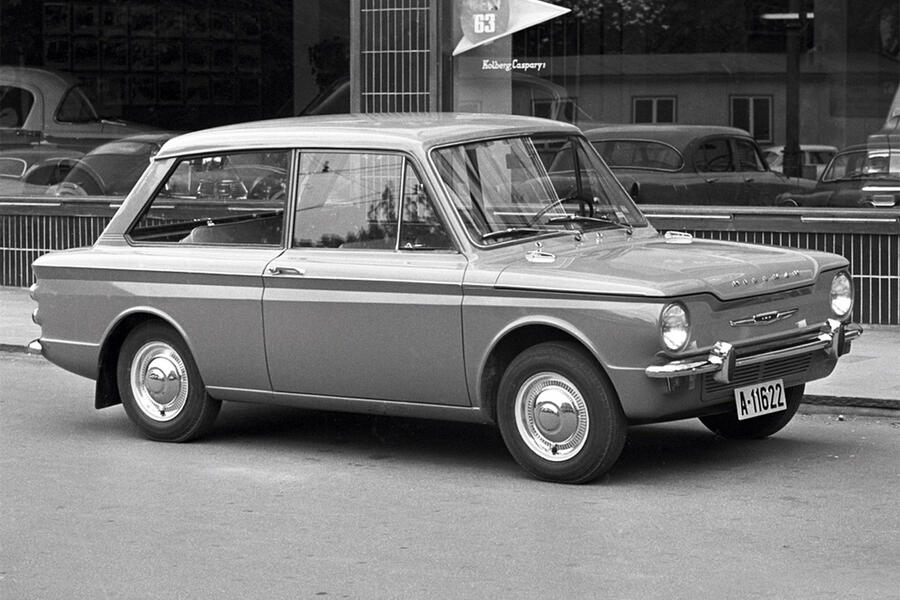
1963 Hillman Imp: The Imp was abrim with innovation. Britain’s first rear-engined car, it also had independent suspension and synchromesh on all gears. The design was superb. The build quality, sadly, was not.
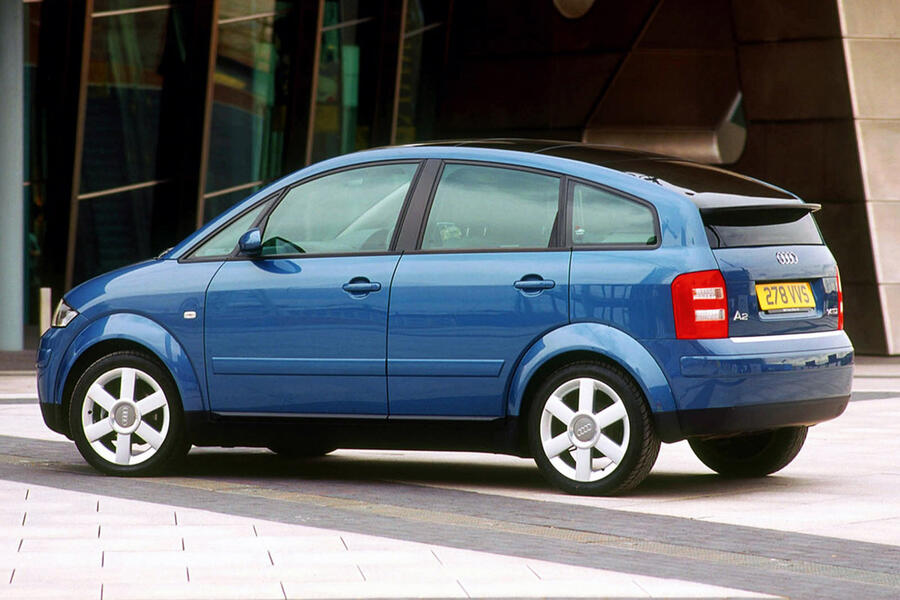
1999 Audi A2: Audi must have been nuts trying to make an all-aluminium mass-market car, but the result was a spacious five-door hatchback that, at less than 900kg, weighed no more than today’s Smart Fortwo. An expensive but brilliant failure.
READ MORE
Mercedes to launch 32 new models by 2022 in massive rollout
Facelifted Mercedes E-Class gains new engines and interior tech
Mercedes to reduce model line-up, platforms and powertrains

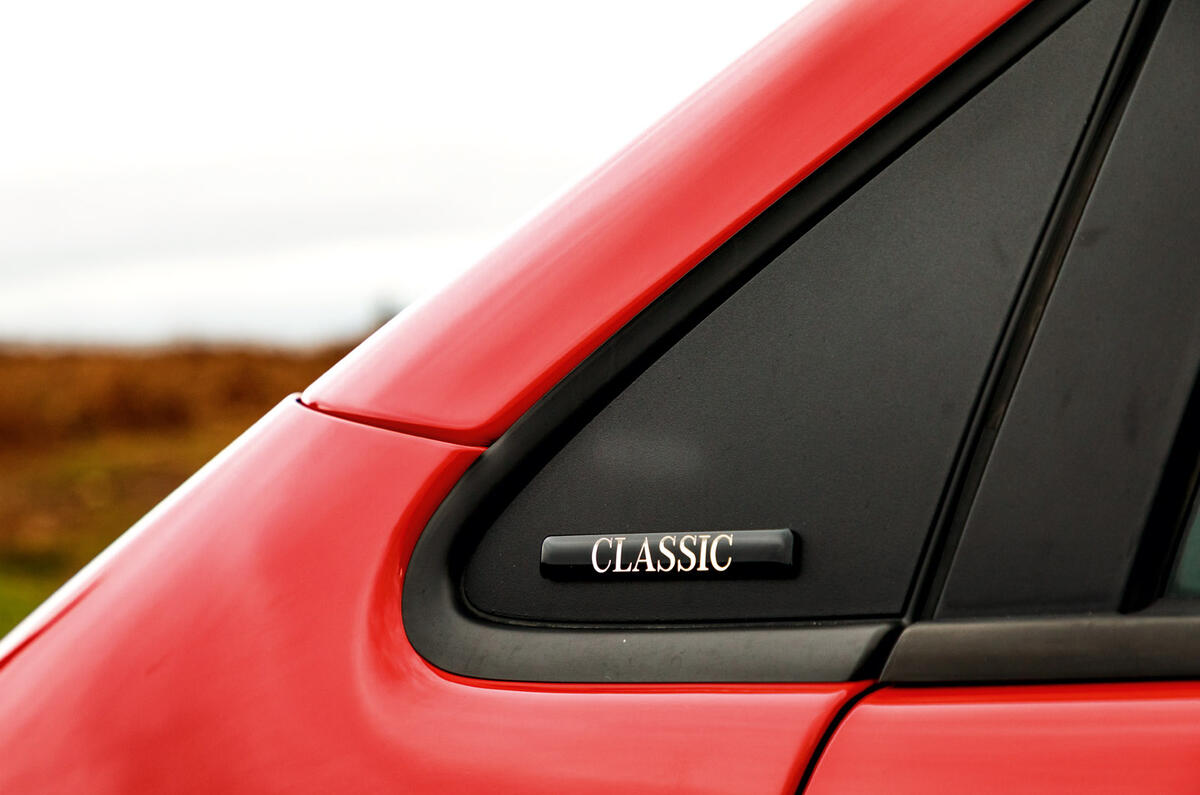
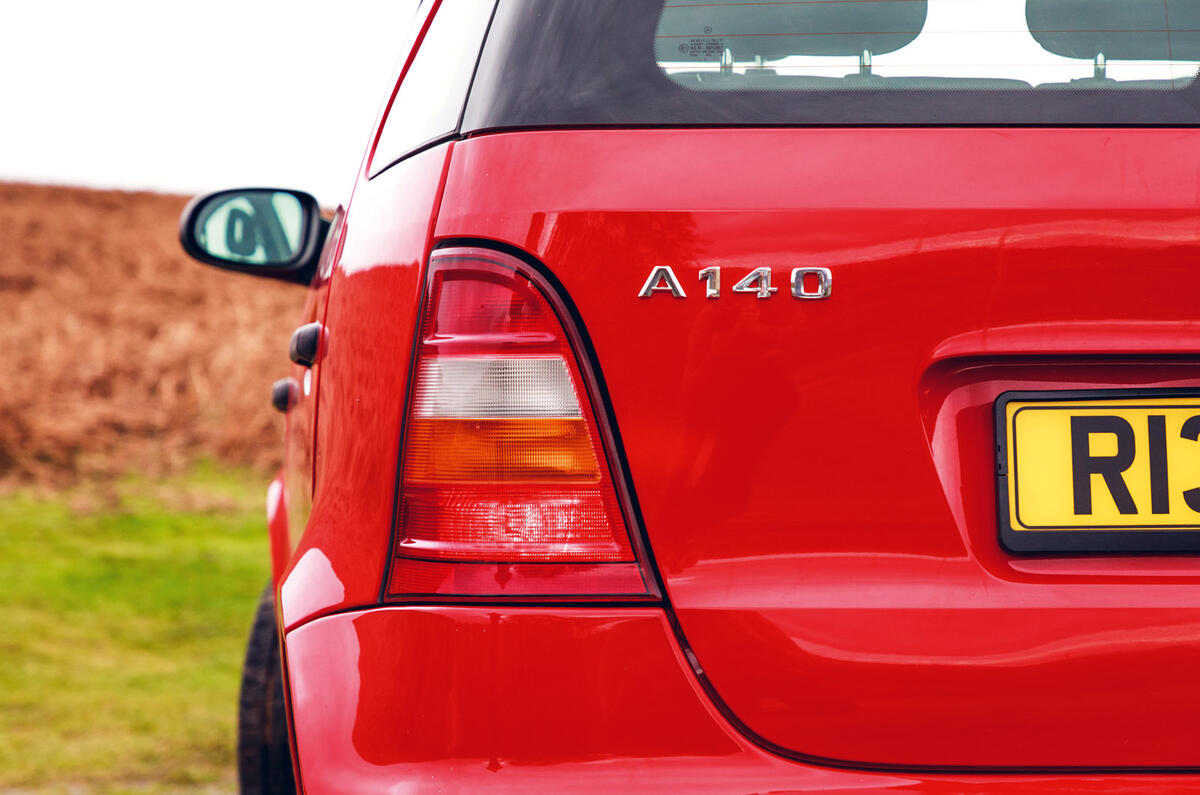


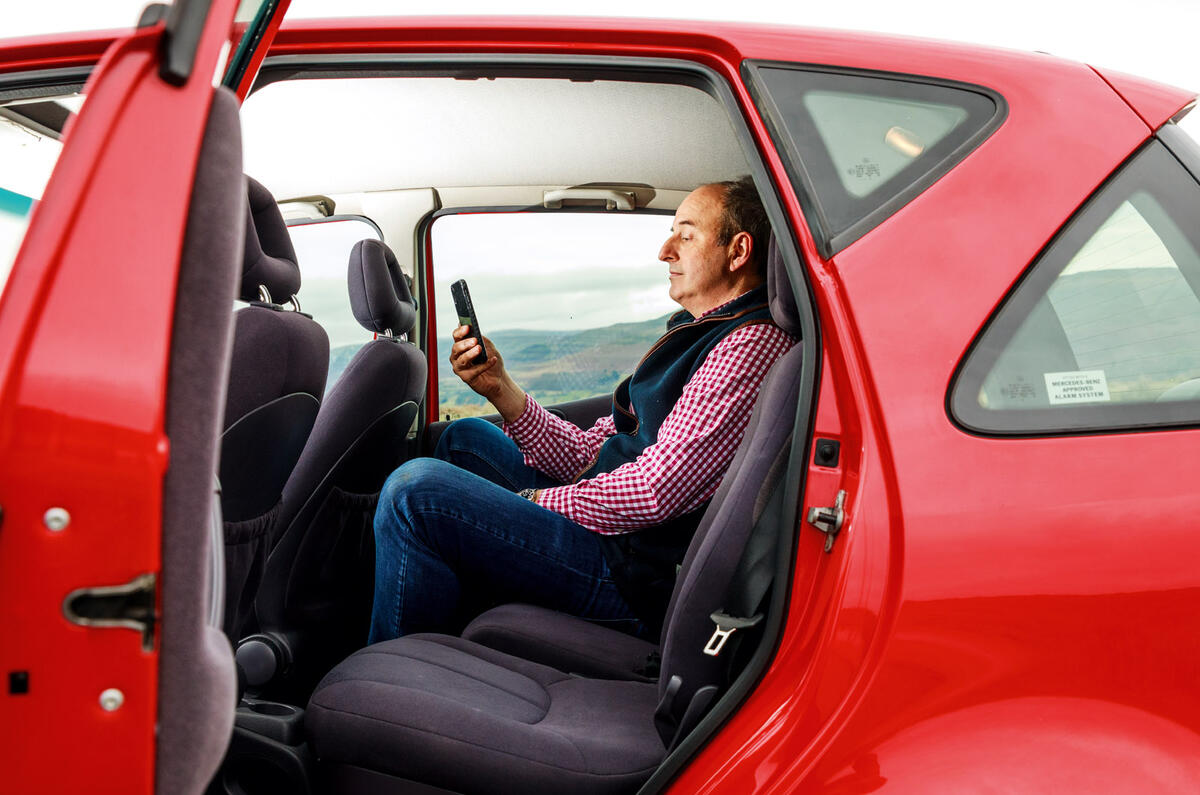
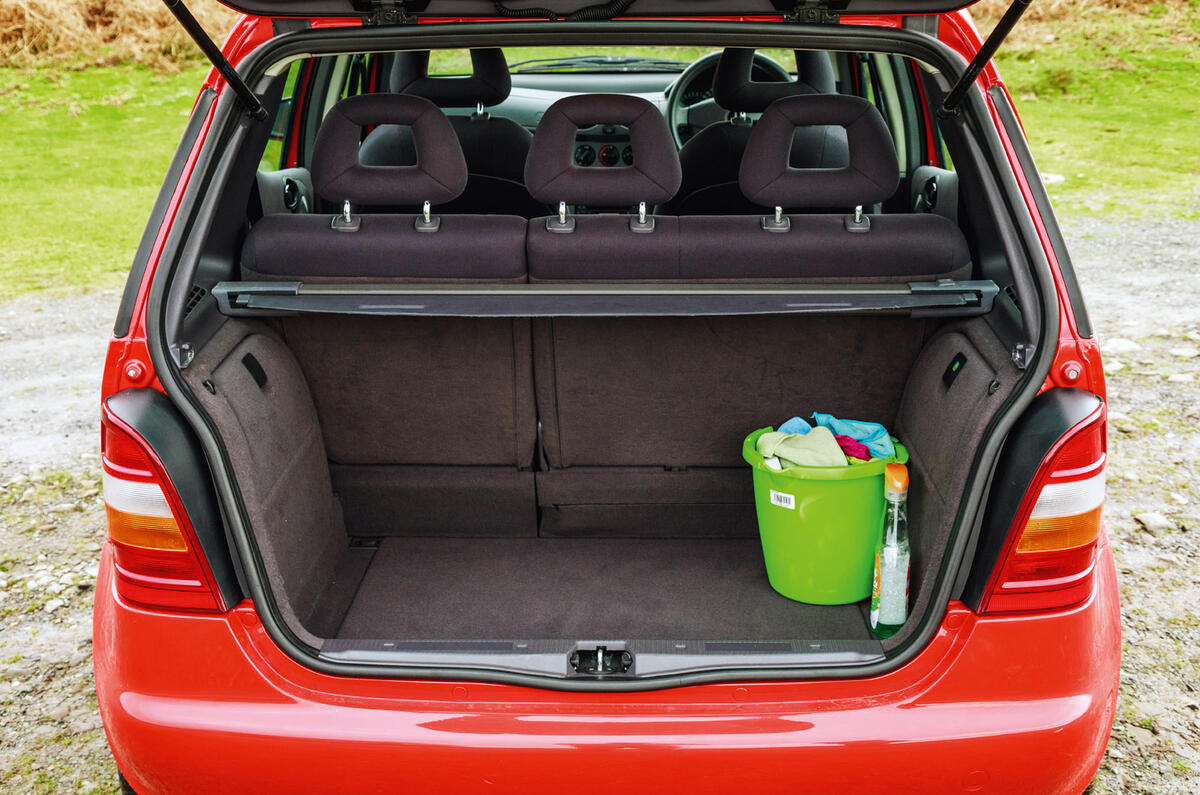
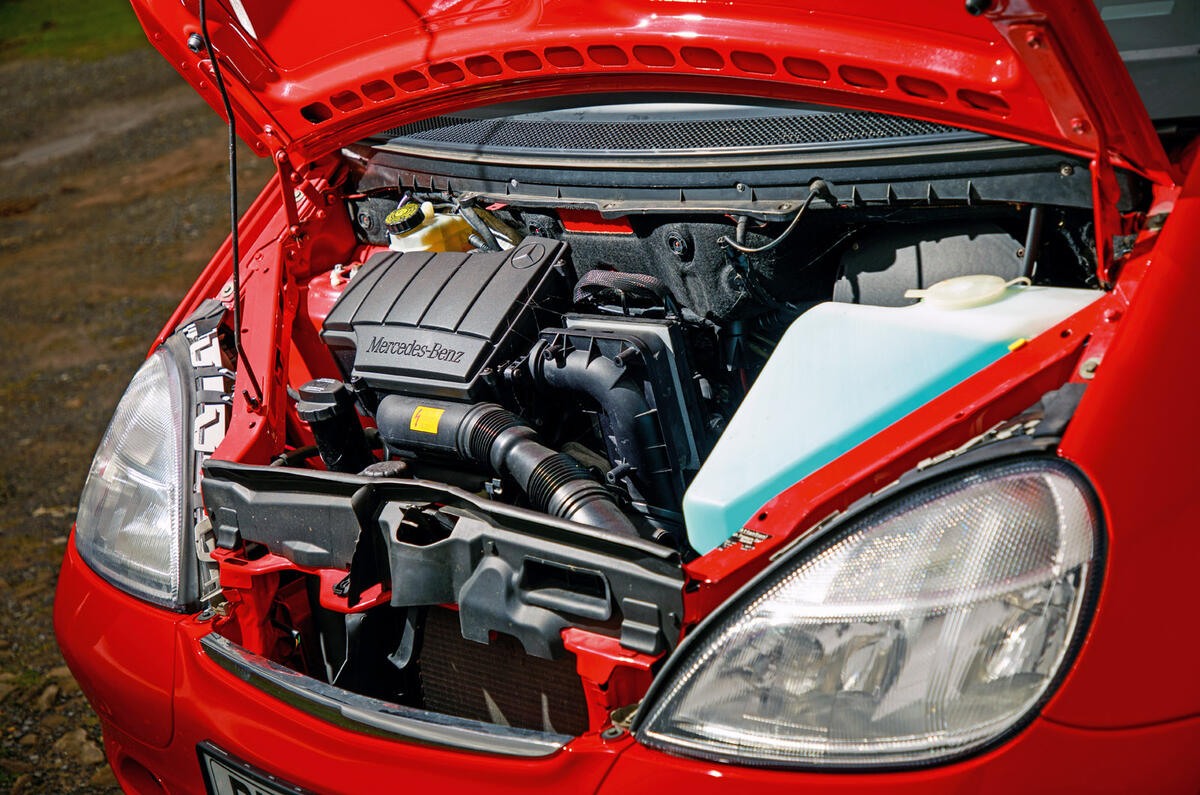
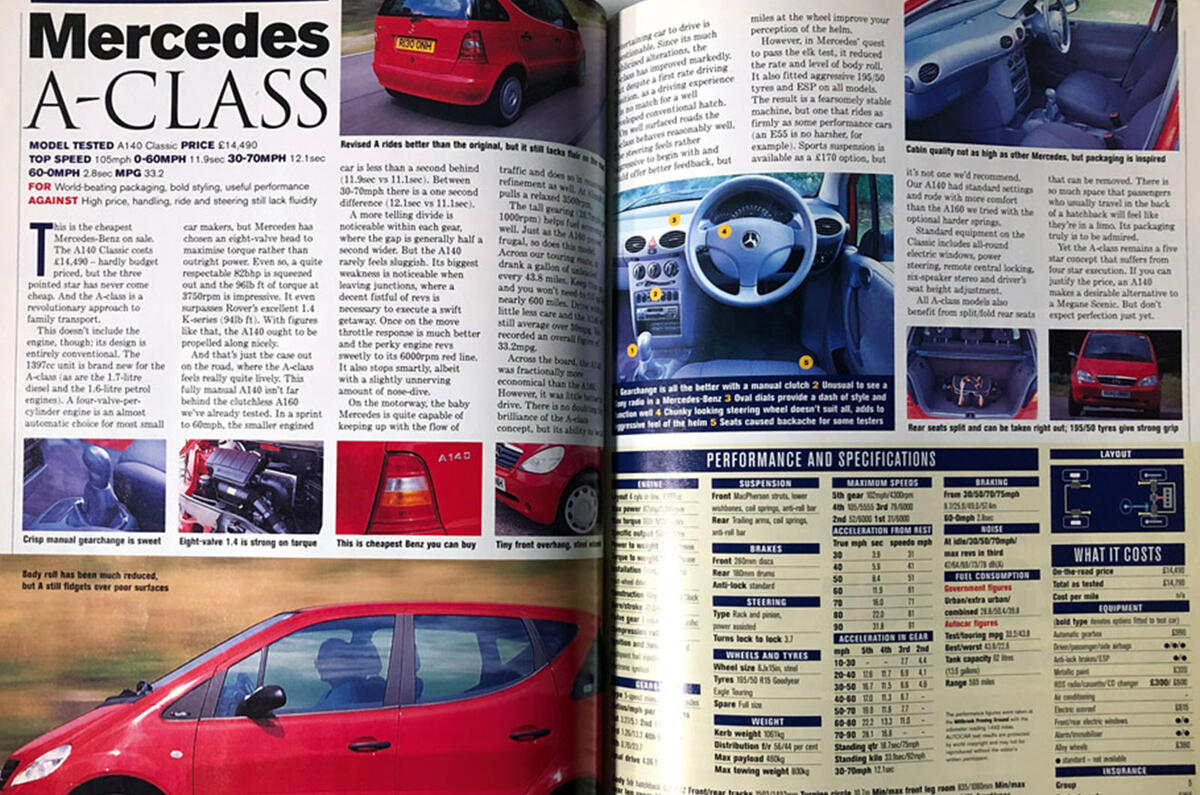
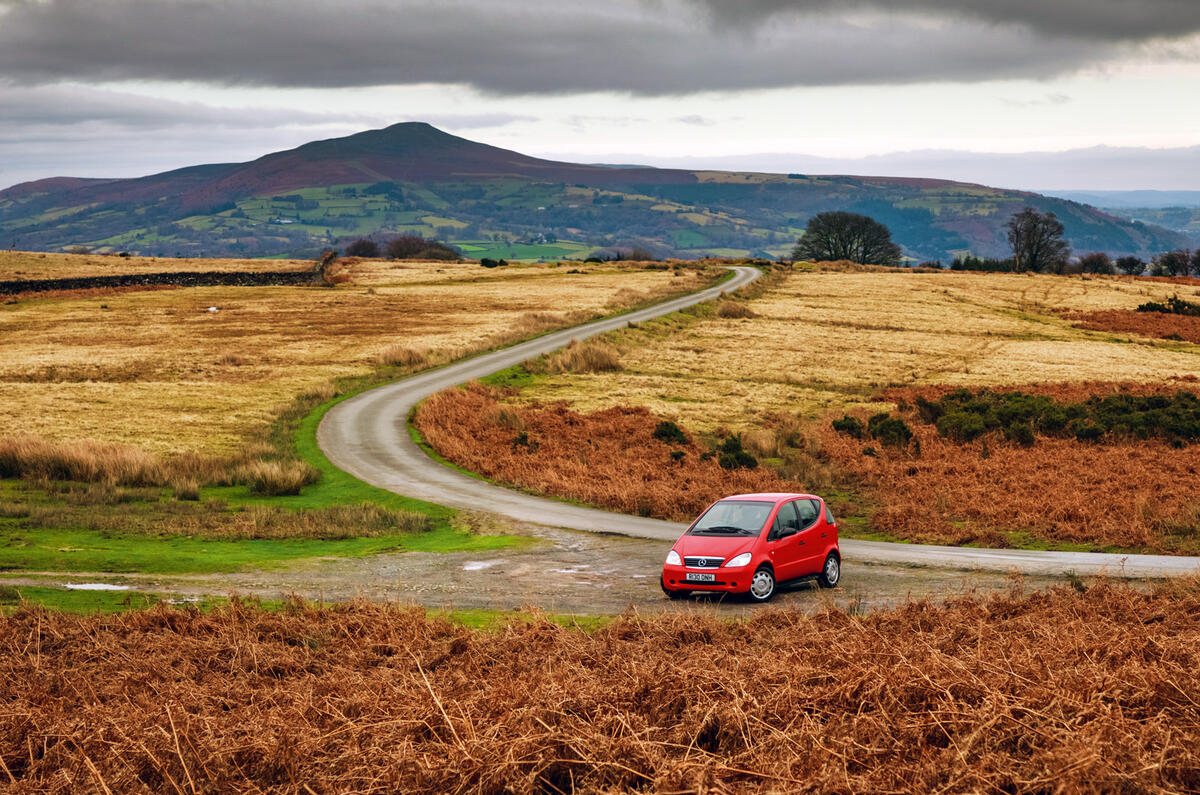
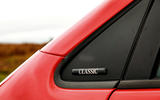
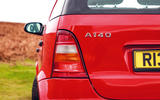

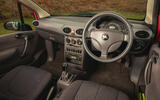

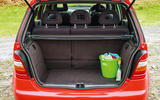
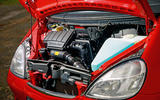
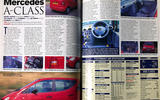



Join the debate
Add your comment
The A Class was very clever
The A Class was very clever but the A2 was a better car the only decent Audi
This and the A2 were before
This and the A2 were before their time, would've made excellent EVs with their innovative floors.
Best car ever
The reason why it was axed